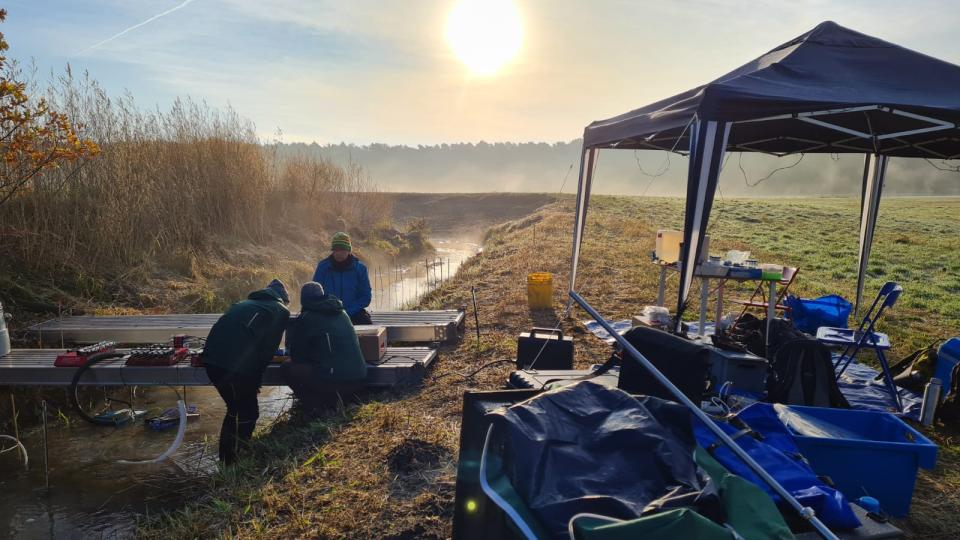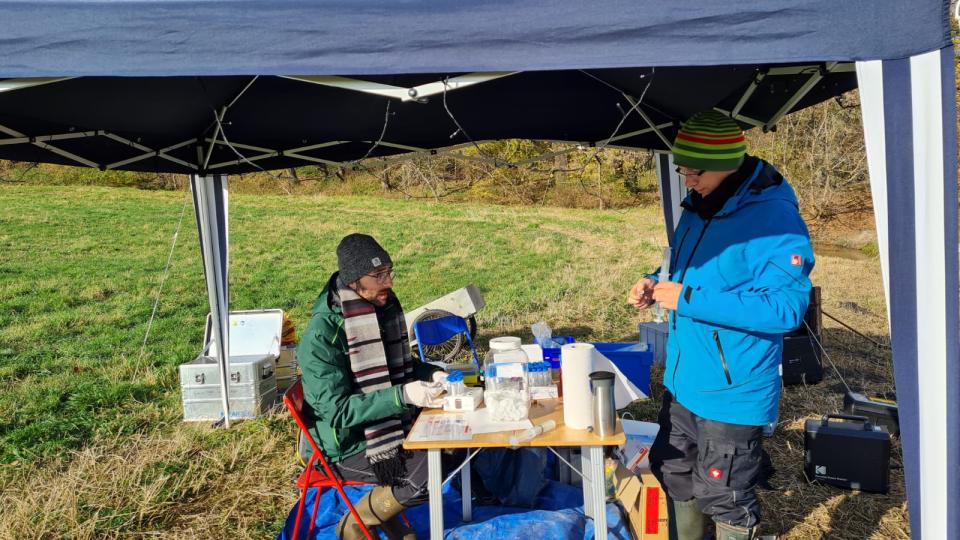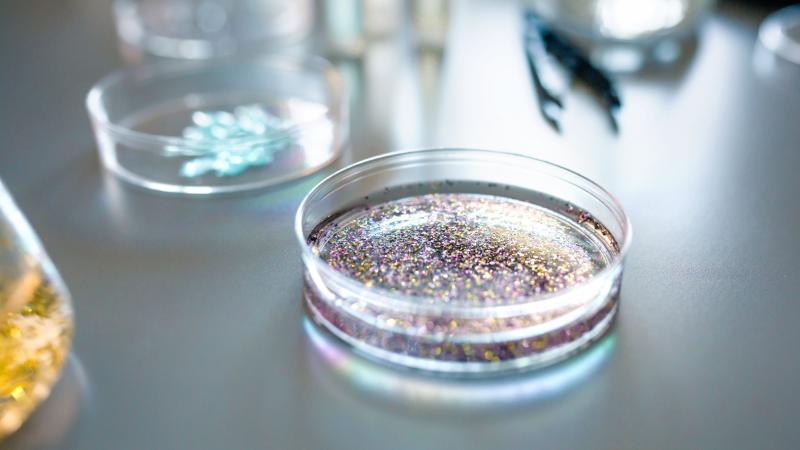The flow path in the sediment of the Erpe for regular sampling of organic trace compounds and water parameters. | Photo: Christoph Reith
The hyporheic zone is the inconspicuous layer in the riverbed where surface and groundwater mix. So many important turnover processes take place in this zone that it is called the "liver of the river", in reference to our metabolic organ. In addition to various water constituents such as nutrients or metals, pollutants can also be retained here. IGB PhD student Christoph Reith investigated this important function by studying the attenuation of trace organic compounds in the Erpe River in Berlin. He used a newly developed method to preset specific flow paths of the water in the hyporheic zone. U-shaped pipes were installed in flow direction along a river cross section in the hyporheic zone.
"It is very important to know the flow paths in the sediment in order to be able to estimate the turnover processes of different chemicals. Depending on sediment properties, flow velocity and residence time, attenuation of compounds can vary," explained Christoph Reith.
Trace organic compounds such as pharmaceuticals, X-ray contrast media, artificial sweeteners, and corrosion inhibitors pose a risk to human health and the ecosystem, but little is known about their fate and potentially harmful transformation products in the aquatic environment. In rivers, various attenuation processes such as hydrolysis, photolysis, sorption and (bio)transformation in the hyporheic zone can take place.
Sweeteners and X-ray contrast agents are strongly attenuated in the hyporheic zone
The team found that along the 35-centimetre flow path, five of the 18 trace organic compounds studied were strongly attenuated: The concentrations of acesulfame (artificial sweetener), iopromide and iomeprol (both X-ray contrast media), metoprolol (beta-blocker) and gabapentin (anticonvulsant) were at least 75% lower in the hyporheic zone at the end of the flow path than the corresponding concentrations in surface water. Three of the studied substances showed moderate retention of 75 to 25 percent, the others were below that.
"One striking result was that the trace organic compounds that showed strong or moderate attenuation were mainly retained in the first five to 15 centimetres corresponding to the oxygen-rich sections of the flow paths. This work underlines the high removal potential of the hyporheic zone," said Christoph Reith.
Sampling the pore water, i.e. the water in the interstitial spaces of the sediment in the hyporheic zone. | Photo: IGB

Field work of the team on the Erpe in November 2021. | Photo: IGB

Sampling in the field. | Photo: IGB









